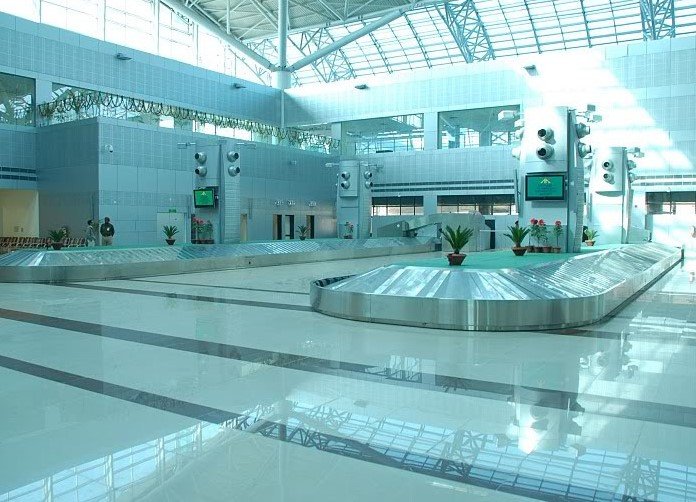In a delay that raised eyebrows, a US military plane carrying 112 deportees landed at Amritsar’s Sri Guru Ram Dass Jee International Airport late on Sunday night, but the passengers were not allowed to disembark until the early hours of Monday. After waiting for nearly seven hours, they were taken out of the airport under heavy security, in groups, and were not allowed to speak to the media.
Long Wait and Restricted Access
The plane, which touched down at 10:03 PM, had arrived with 112 deportees on board. However, despite the flight’s landing, authorities kept the passengers inside the plane, offering no explanation for the delay. It wasn’t until after 4:30 AM the following morning that they were allowed to exit, and even then, the process was slow. The deportees were escorted out in small batches and transported to waiting buses.
While this might have seemed like a routine airport operation, the long delay and the heavy security presence created a sense of unease. Families waiting to reunite with their loved ones were kept in the dark about the reasons behind the delay. The authorities did not permit any direct contact between the deportees and their families upon arrival. Furthermore, media outlets were kept at bay, unable to speak with the individuals involved.

Security Measures and Restrictions
Once the deportees were finally allowed to leave the airport, they were escorted in buses, with tight security measures in place. The buses left the airport through two different gates, ensuring minimal public visibility.
The strict security presence meant that not only were the deportees not allowed to speak to media, but their families weren’t allowed to meet them inside the airport either. This restriction has added to the public’s concerns about the secrecy surrounding the process and raised questions about why such stringent measures were in place for the deportees.
- Deportees were transported to their respective destinations, with the states of Punjab, Haryana, and Himachal Pradesh arranging for their further travel.
- 31 deportees were from Punjab, 44 from Haryana, and one from Himachal Pradesh, according to authorities.
The Deportees’ Journey and Its Impact
The experience of deportation is often a difficult and emotional one. For the individuals involved, it was undoubtedly a stressful and confusing journey, especially with the added uncertainty of the delay in Amritsar. The situation also highlights the challenges faced by people in the deportation process—most of whom had likely not anticipated such long waits upon arrival in their home country.
As the authorities continue to maintain silence about the specifics of the delays, it’s clear that the deportees have faced not only the hardships of being sent back to their country but also the uncomfortable realities of a system that has been criticized for its opacity and lack of communication.
For those waiting on the outside, the hours of uncertainty would have felt like an eternity. Many of the families had traveled to the airport in anticipation of reuniting with their loved ones, only to find themselves in a holding pattern, unsure of what was happening inside the airport.
Arrangements Made for Further Travel
Once cleared from the airport, the deportees were provided transportation arrangements to return to their respective states. The coordination of these efforts, while crucial for getting the individuals to their final destinations, also highlights the continued strain placed on systems that handle deportations and repatriations.
It’s important to note that while the wait at the airport was prolonged, the authorities at the Sri Guru Ram Dass Jee International Airport managed to facilitate the deportees’ exit from the airport with some efficiency, ensuring that they were eventually on their way to their final locations. However, the incident has raised questions about the transparency of deportation processes and the well-being of those involved.
